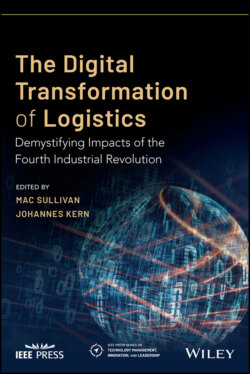Читать книгу The Digital Transformation of Logistics - Группа авторов - Страница 39
Conclusion
ОглавлениеGlobal economic stability and GDP growth have delayed the automation of white‐collar jobs to a lesser extent than blue‐collar jobs. Companies that had healthy balance sheets and content shareholders were less likely to have capital expenditures on expensive automated solutions as social ramifications were daunting and productivity gains and immediate ROI were not abundantly clear. More competition from new entrants and startups enabled by new systems integration solutions, as well as increasingly cheaper and more powerful cloud computing and processing speeds, will lower the barrier for hub economy companies to consider investing in the logistics industry. Profit per job derived from human input will decrease with higher labor costs, and increased transparency by marketplaces will continue to accelerate consolidation in the logistics market.
Talent shortages for documentation work will continue to be an issue in the logistics industry, and the industry will see the sun set on the era of information and pricing arbitrage. Investment in automating tasks whether through an API or RPA will outweigh the cost savings derived from outsourcing rote tasks to a lower‐cost location. Increased costs due to human error are currently negated by the complexity and number of variables dealing with different geographies, commodities, and customer types; however, technology is allowing for a wider view across multiple systems. While the operations of many logistics providers have remained unchanged for decades, there is an abundance of opportunities for improving efficiency through the use of technology, but company culture, organizational prioritization, and a strategy for change management need to be addressed first. Logistics companies will be forced down the digital transformation path, and those who start on it sooner will have a better chance to survive.
